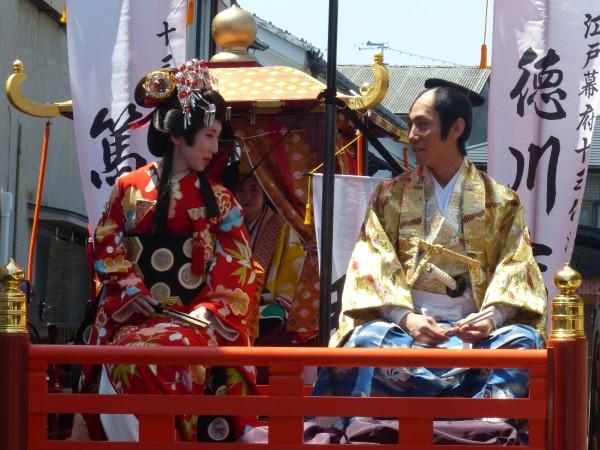Montagne sacrée de Shiga : Mont Hiei (Hieizan)
Voici un guide pour les débutants en randonnée en montagne souhaitant monter au mont Hiei (Hieizan).
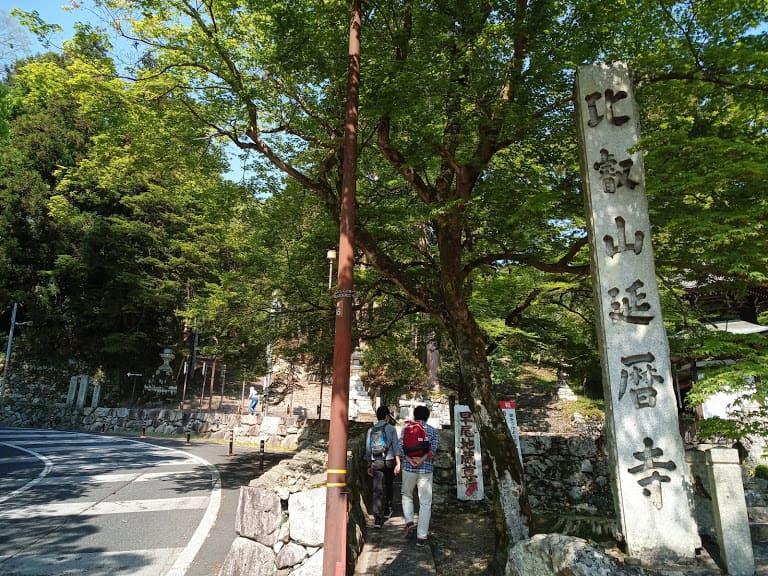
Même si vous êtes débutant(e) en randonnée en montagne, ne vous inquiétez pas. Le parcours que nous avons pris est sympathique.
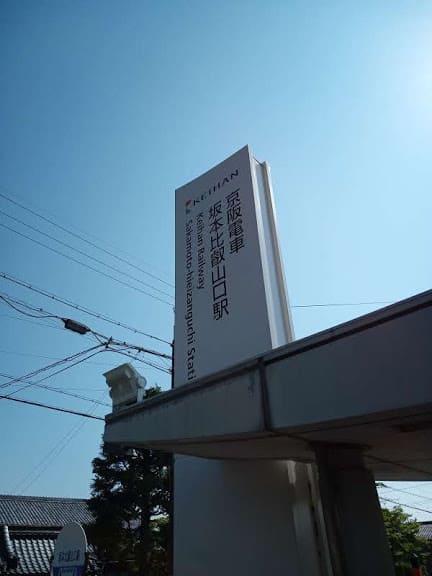
Mais prenez des équipements de qualité et suffisamment d'eau.
Assurez-vous de bien vous hydrater tout au long du parcours.
La randonnée n'est pas une course. Marchez à votre rythme.
Bon, on y va !
---------------
(1) Gare la plus proche
La gare la plus proche est la gare « Sakamoto Hieizanguchi » de la Ligne Keihan.
De cette gare, prenez la direction du temple Hiyoshi Taisha. Le chemin est bien indiqué.
Vous marchez environ 5 minutes.
(2) Entrée du parcours de randonnée du mont Hiei (Hieizan)
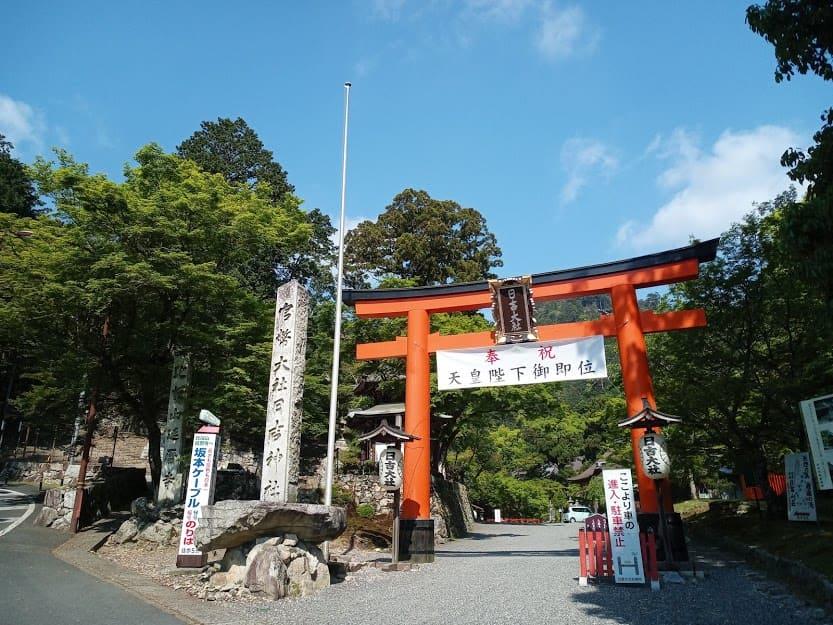
Temple Hiyoshi Taisha. À gauche du Torii (portail) se trouve un escalier en pierre.

C'est l'entrée du mont Hiei (Hieizan).
Montez cet escalier jusqu'à la fin.
Désormais, il n'y a que des indications en japonais.
Mais ne vous inquiétez pas. Vous arriverez facilement au temple Enryakuji.
Admirez la vue panoramique sur le lac Biwa, les vieilles statuettes en pierre, etc. tout en respirant l'air frais de la forêt.
(3) Chemin vers le temple Enryakuji
Au bout de l'escalier en pierre, vous arrivez sur cette route.
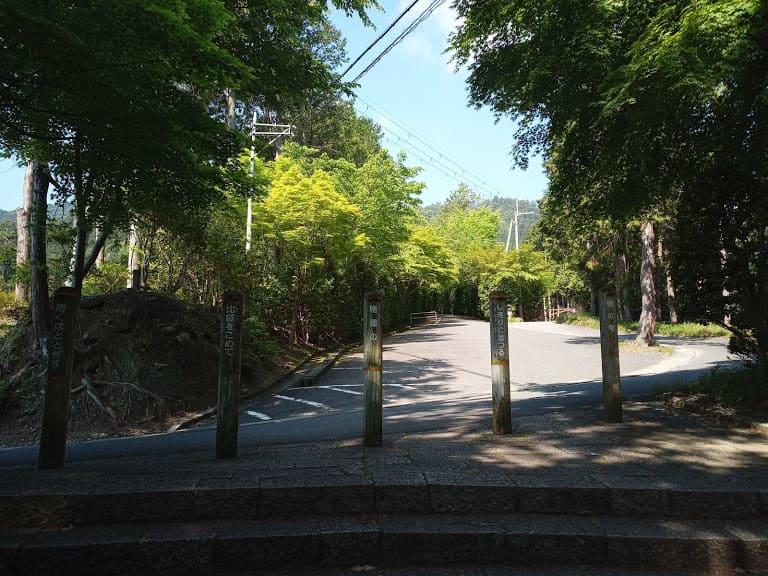
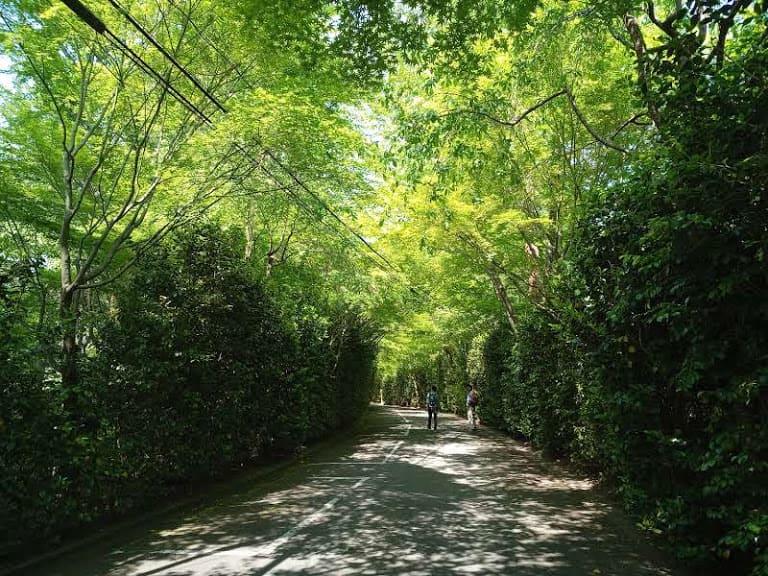
Au bout de cette route, il y a des barrières.
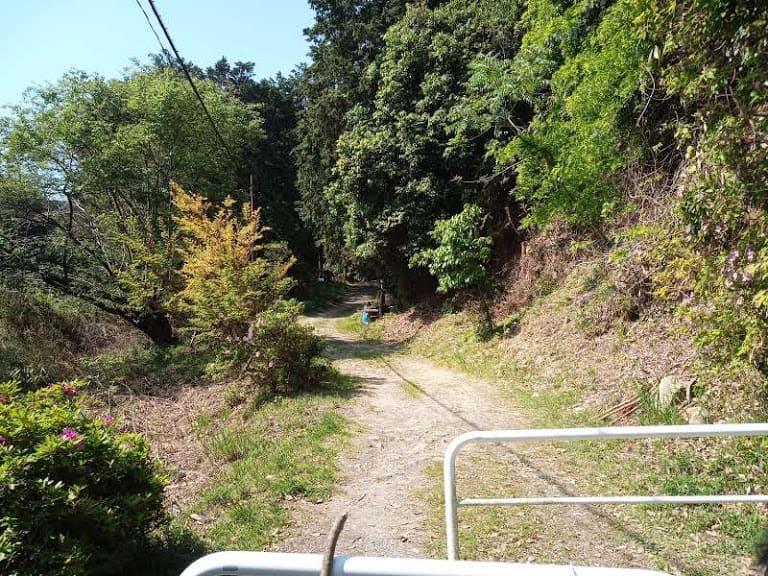
Après ces barrières, vous marchez sur un chemin non goudronné qui n'est pas dangereux mais qui est un peu difficile à marcher.
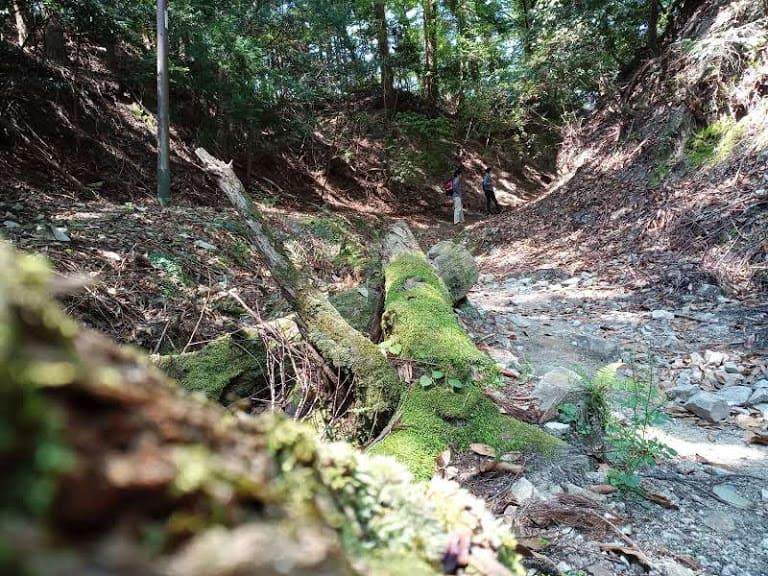

Sur ce chemin, vous pouvez voir des statuettes en pierre, des poteaux en pierre, etc.
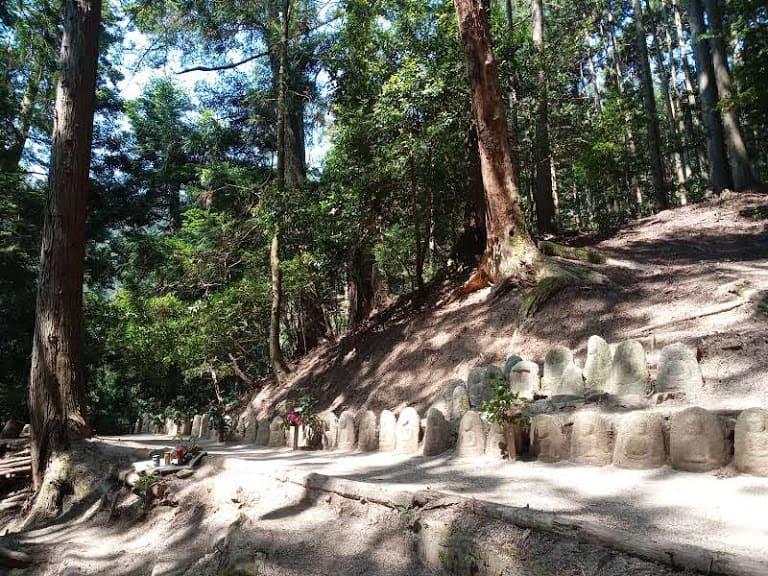
 Stone statue
Stone statue
À mi-chemin, il y a un endroit comme celui-ci, pour se reposer un peu.
Il a un banc en face de ces statuettes en pierre qui sont bien alignées.
Après une pause, en avant !
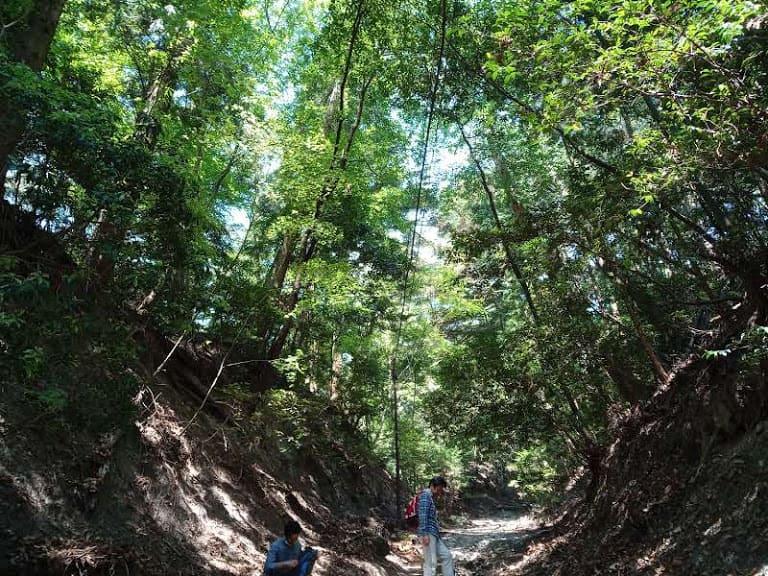
Cette indication doit signifier que le temple Enryakuji n'est pas loin...
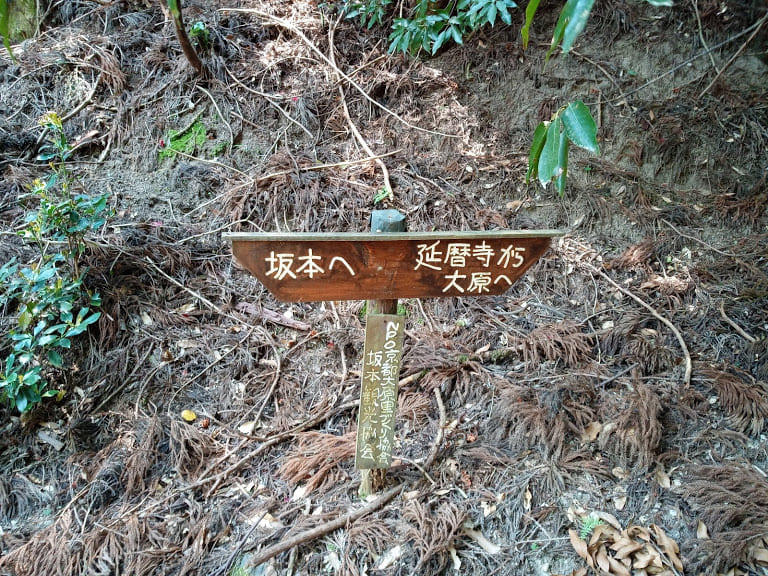
Mais la distance n'est pas indiquée. Tant pis, il faut marcher !
 Around
Around
Le mont Hiei (Hieizan) et le temple Enryakuji se trouvent dans la commune de Sakamoto qui a prospéré grâce à sa maçonnerie, comme vous pouvez le constater durant votre randonnée.
Quand vous arrivez à ce bâtiment et cette tortue, vous n'êtes plus très loin de l'arrivée.
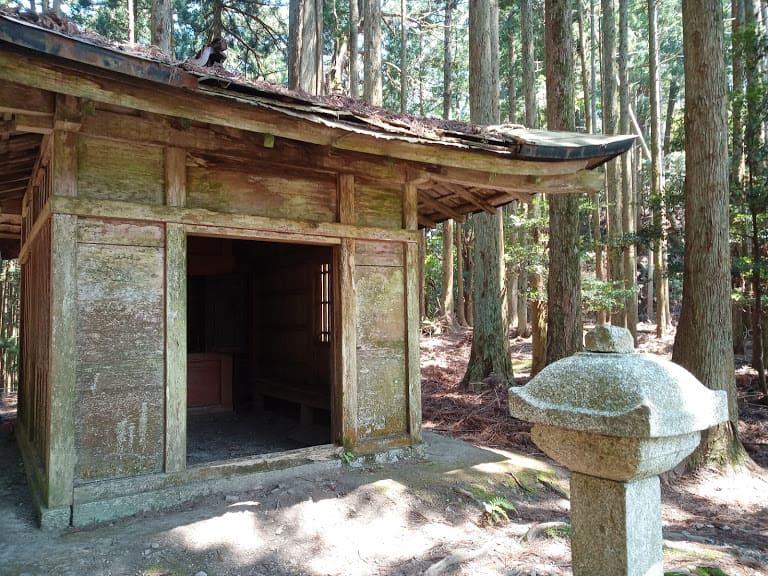
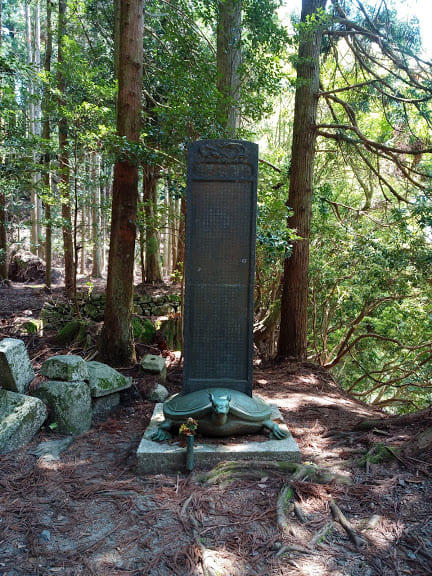
Mais malheureusement, il reste une pente rude à monter...
 It must be
It must be
C'est dur, mais il faut y aller !

C'est l'arrivée ! Vous êtes maintenant à côté de l'hôtel Enryakuji Kaikan.

Si vous n'êtes pas trop fatigué(e), allez jusqu'à l'entrée principale « Monjuro » et au sanctuaire principal « Kompon-Chudo » du temple Enryakuji.



Le sanctuaire principal « Kompon-Chudo » est en travaux de rénovation jusqu'en 2026.
Pour plus d'informations https://www.voyage-shiga.com/
Vidéo sur le temple Enryakuji : https://www.tokyostreetview.com/hieizan-enryakuji-temple-shiga/
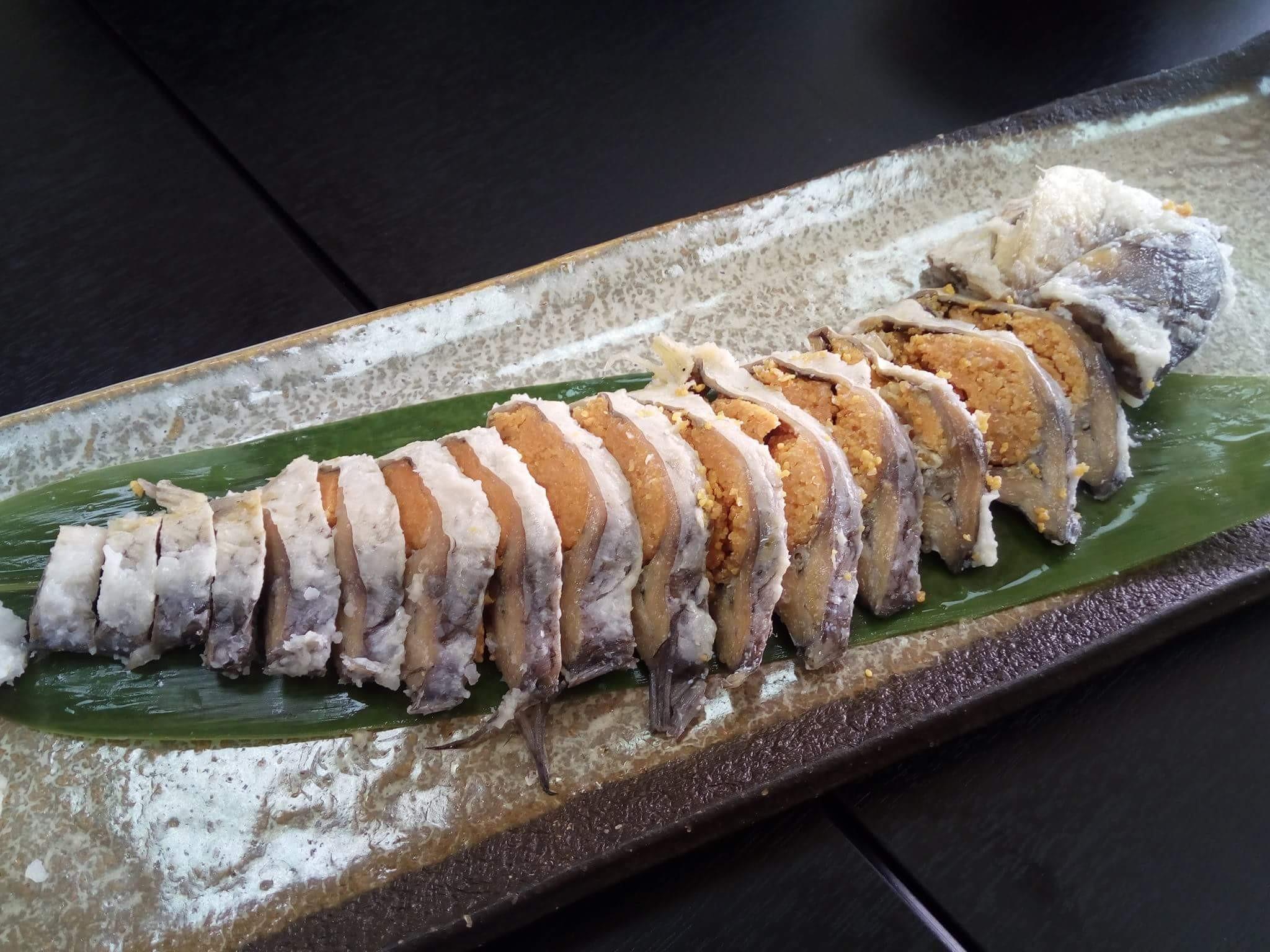
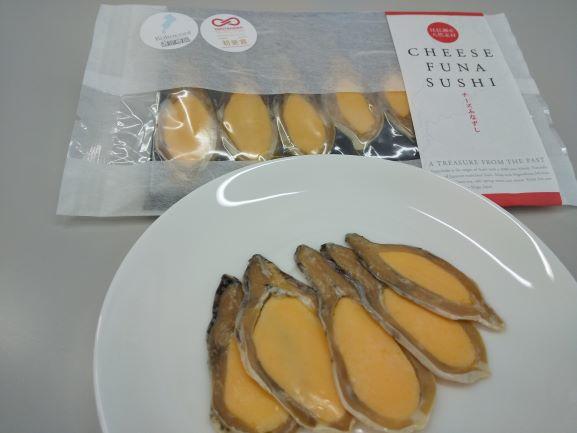

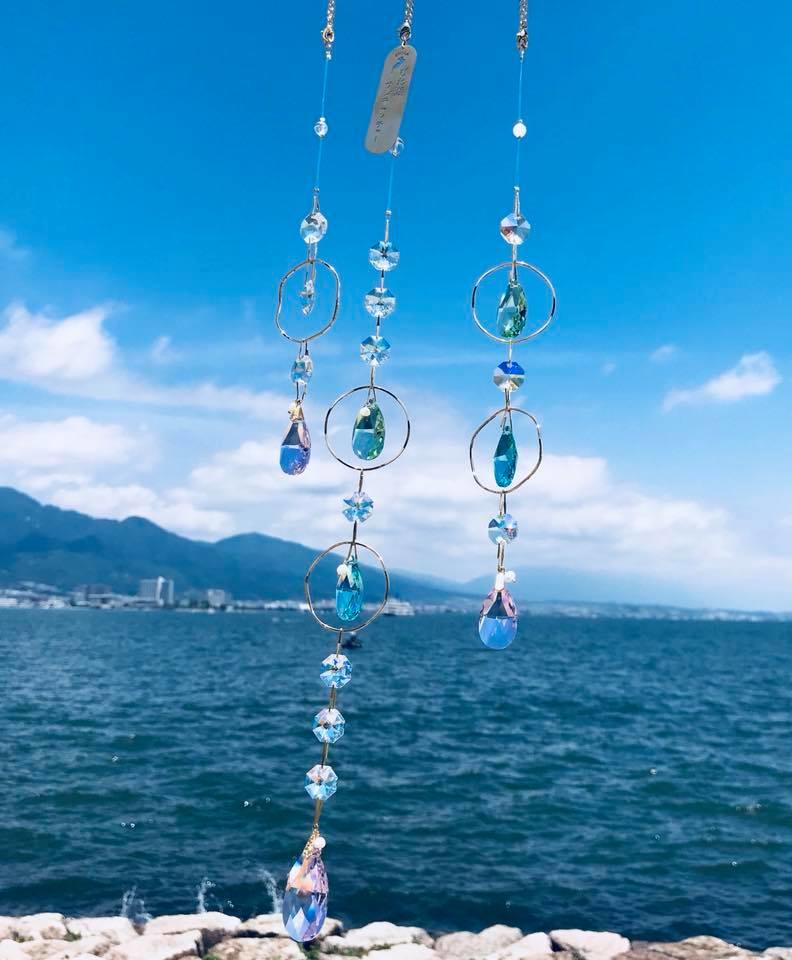 Their suncatchers are using some small Biwa pearl, this pearls are freshwater pearl made in Lake Biwa.
Their suncatchers are using some small Biwa pearl, this pearls are freshwater pearl made in Lake Biwa. 
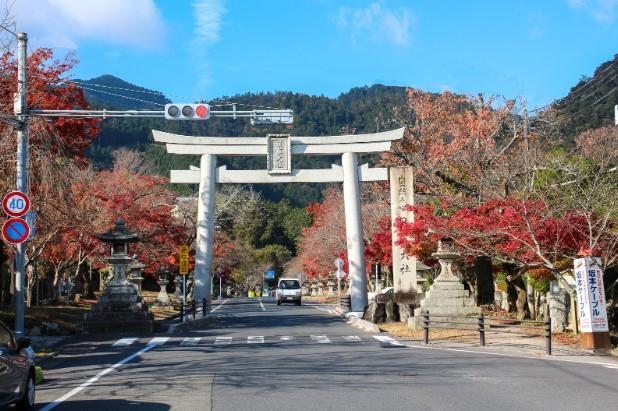
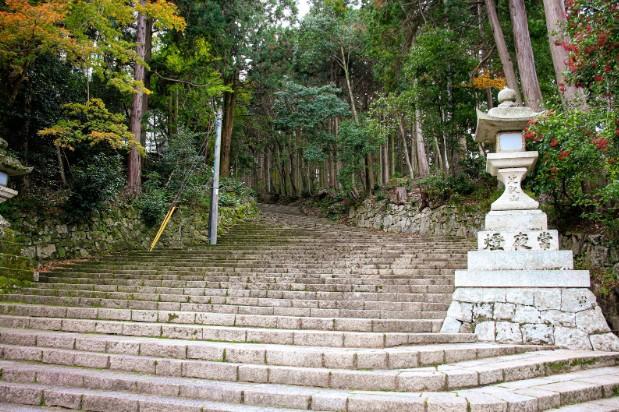
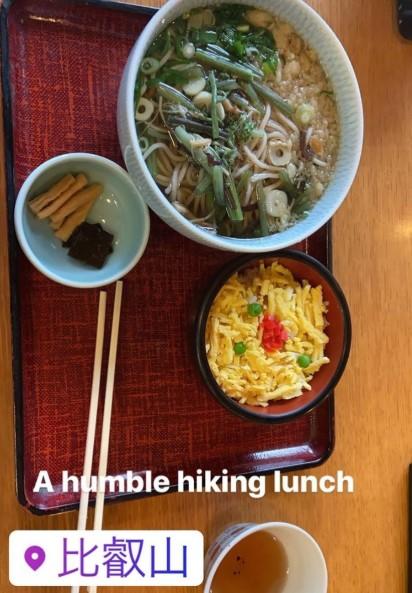
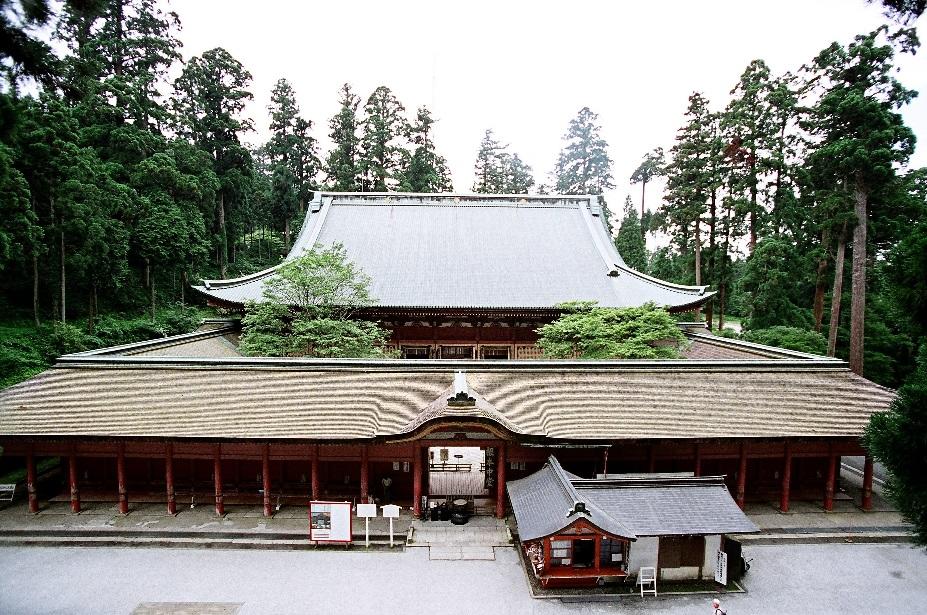
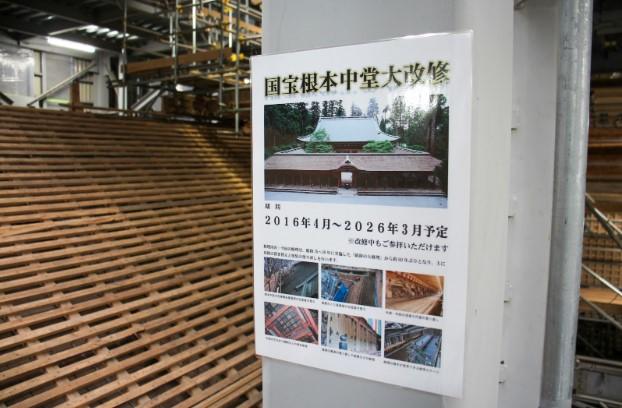
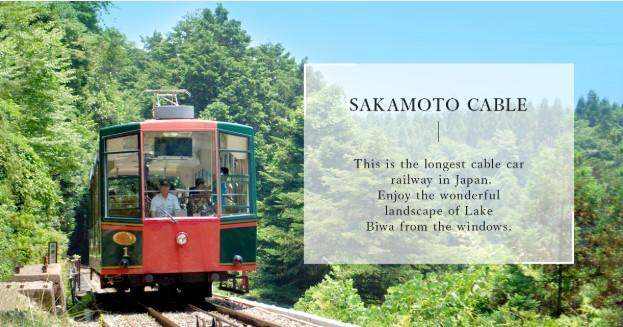
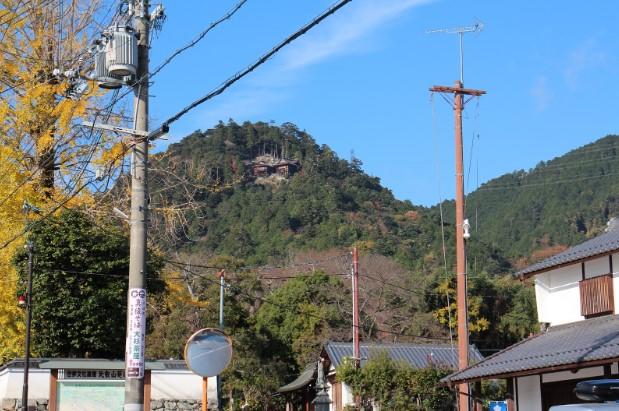
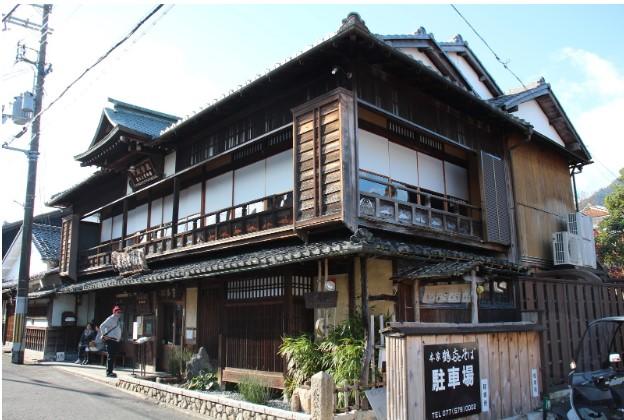



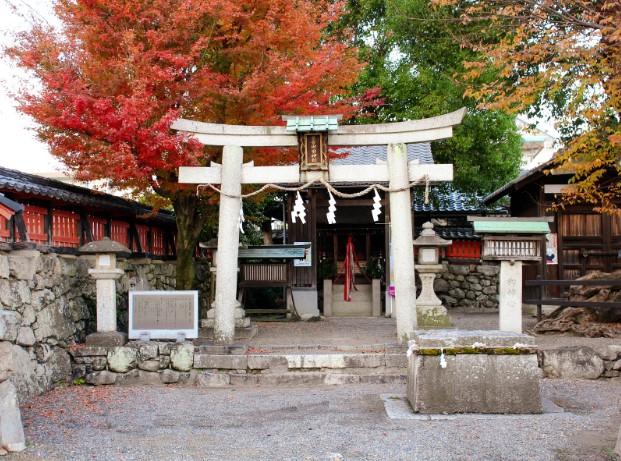





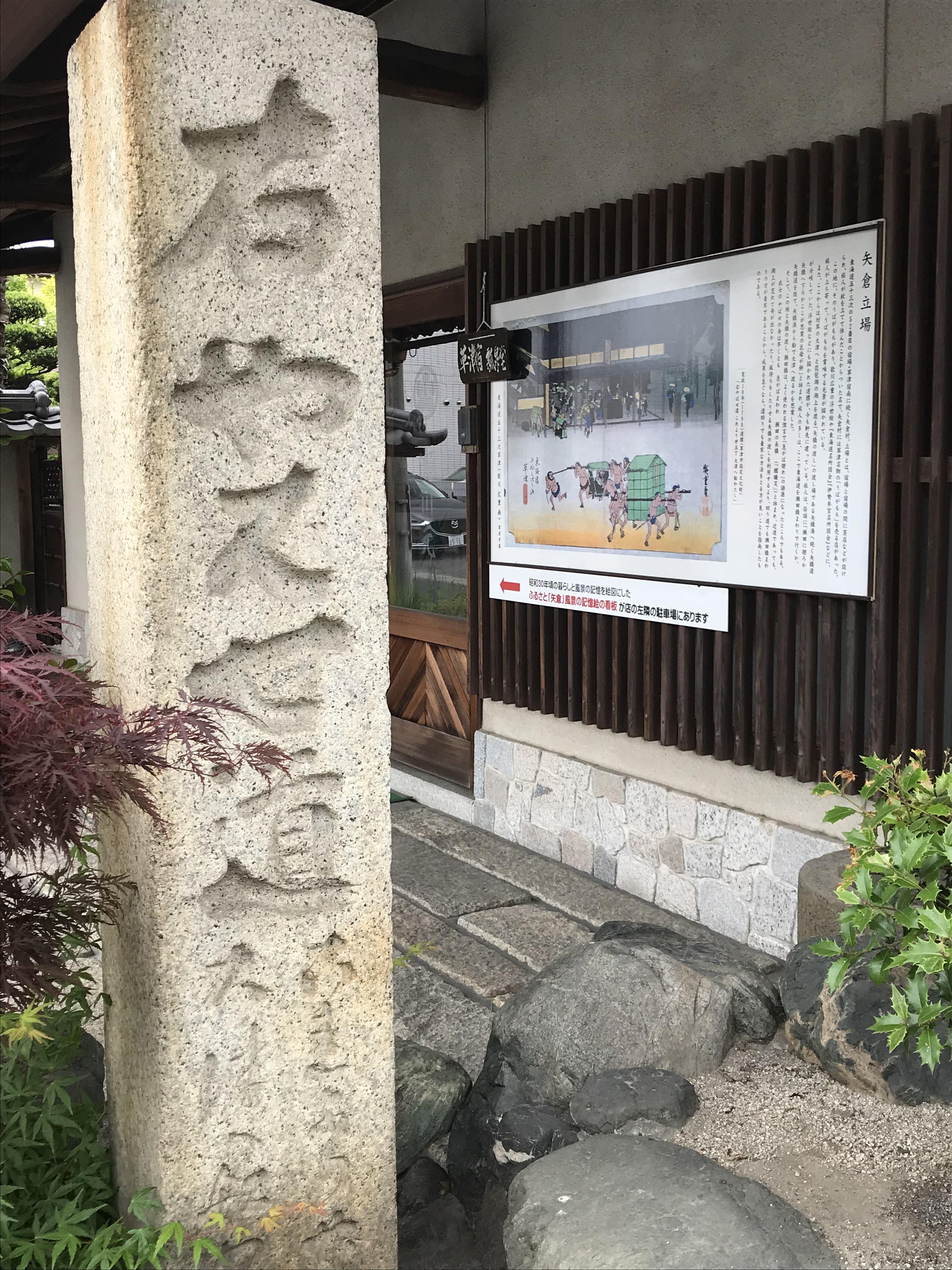


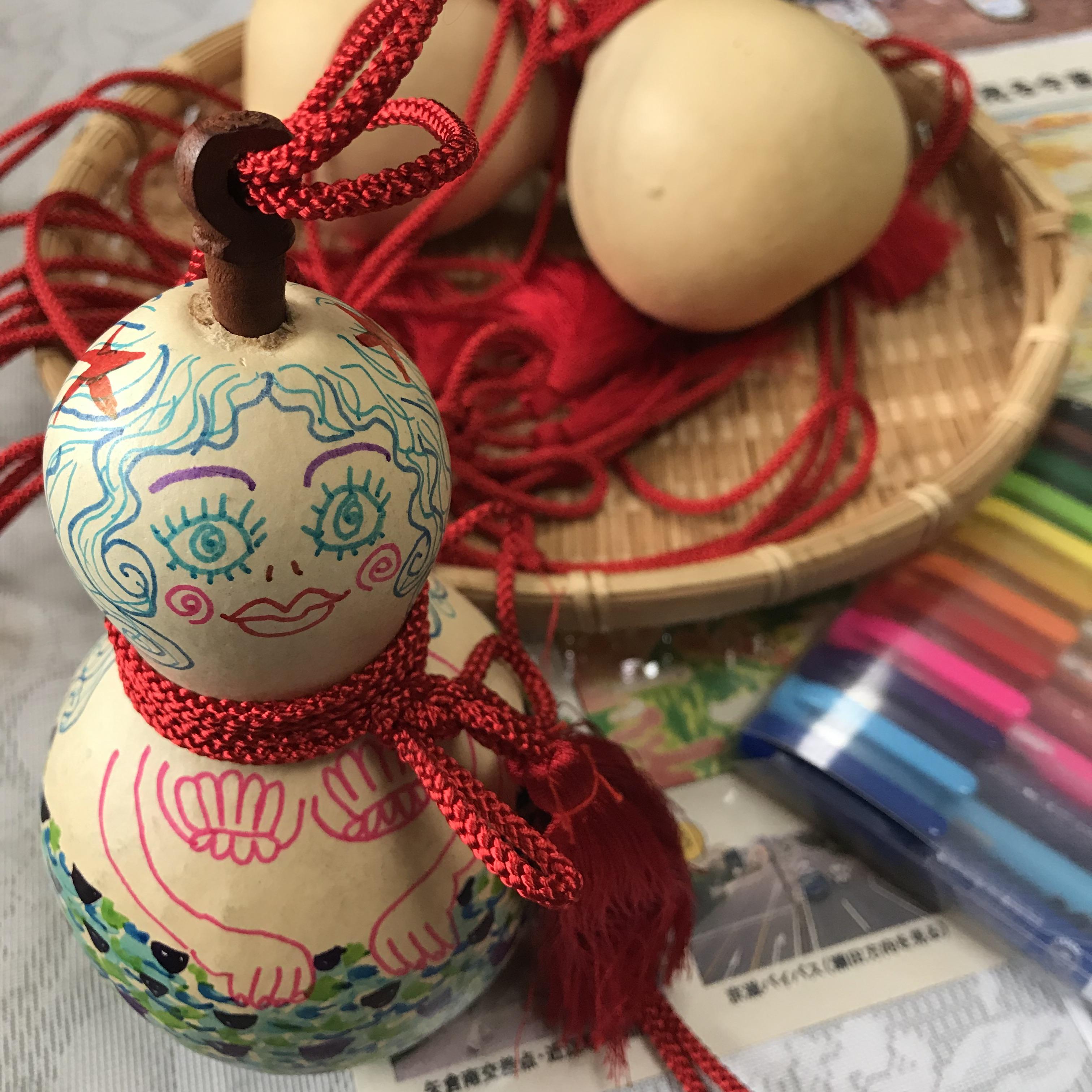







 C'est ainsi que notre journée se termine, dans cette petite enclave de nature.
C'est ainsi que notre journée se termine, dans cette petite enclave de nature. 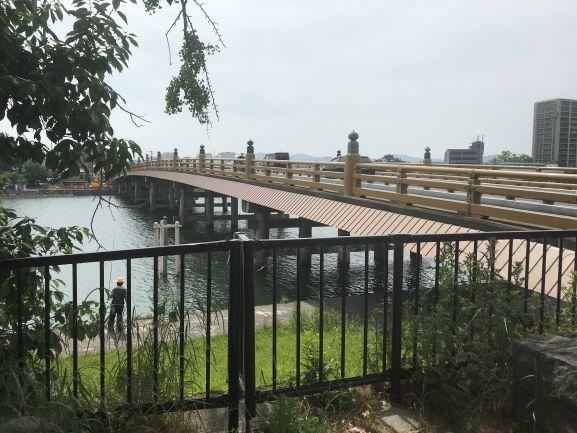 Nous commençons la journée dans la capitale de Shiga, où nous visitons d'abord le pont Seta no Karahashi, qui enjambe la rivière Seta. Une courte promenade nous permet d'apprécier le paysage et de faire le plein de vitamine D. Ce pont a toujours été d'une importance stratégique puisqu'il s'agissait du lien direct à Kyoto le plus sécuritaire étant donné les vents capricieux qui soufflent du mont Hiei sur lac Biwa et déroutent les bateaux. Il a donc été détruit plusieurs fois pendant ses plus de mil ans d'existence et sa forme actuelle est moderne. Encore aujourd'hui, c'est un lieu passant, à l'ombre duquel des pêcheurs se tiennent sur la berge et où le festival Senkosai a lieu tous les mois d'août.
Nous commençons la journée dans la capitale de Shiga, où nous visitons d'abord le pont Seta no Karahashi, qui enjambe la rivière Seta. Une courte promenade nous permet d'apprécier le paysage et de faire le plein de vitamine D. Ce pont a toujours été d'une importance stratégique puisqu'il s'agissait du lien direct à Kyoto le plus sécuritaire étant donné les vents capricieux qui soufflent du mont Hiei sur lac Biwa et déroutent les bateaux. Il a donc été détruit plusieurs fois pendant ses plus de mil ans d'existence et sa forme actuelle est moderne. Encore aujourd'hui, c'est un lieu passant, à l'ombre duquel des pêcheurs se tiennent sur la berge et où le festival Senkosai a lieu tous les mois d'août. On dit que ce sanctuaire est l'un des plus anciens du Japon. Sa proximité au lac Biwa lui donne un lien fort avec l'eau, qui se reflète dans ses différents types de divinations omikuji : ici, la prédiction apparaît comme un message secret au contact de l'eau, là, elle se trouve dans un petit poisson qu'il faut pêcher!
On dit que ce sanctuaire est l'un des plus anciens du Japon. Sa proximité au lac Biwa lui donne un lien fort avec l'eau, qui se reflète dans ses différents types de divinations omikuji : ici, la prédiction apparaît comme un message secret au contact de l'eau, là, elle se trouve dans un petit poisson qu'il faut pêcher! Le sanctuaire est assez grand, avec un étang et un jardin en plus des nombreux bâtiments principaux et auxiliaires.
Le sanctuaire est assez grand, avec un étang et un jardin en plus des nombreux bâtiments principaux et auxiliaires. L'un d'entre eux, juste passé le pont où les carpes se rassemblent sous nos pieds, aiderait à trouver l'amour.
L'un d'entre eux, juste passé le pont où les carpes se rassemblent sous nos pieds, aiderait à trouver l'amour. L'endroit est paisible et nous prenons une autre bouffée d'air avant de retourner à Karahashi.
L'endroit est paisible et nous prenons une autre bouffée d'air avant de retourner à Karahashi. Contrairement aux autres poteries de Shiga, celles de style Karahashi utilisent de l'argile tirée directement du lac Biwa. Cette glaise proviendrait des créatures vivantes du lac, qui insuffleraient leur énergie aux céramiques. Le style est aussi célèbre pour sa laque de couleur « bleu lac Biwa ».
Contrairement aux autres poteries de Shiga, celles de style Karahashi utilisent de l'argile tirée directement du lac Biwa. Cette glaise proviendrait des créatures vivantes du lac, qui insuffleraient leur énergie aux céramiques. Le style est aussi célèbre pour sa laque de couleur « bleu lac Biwa ». Après une discussion fort intéressante avec le maître potier, nous nous dirigeons vers un atelier à part, où nous passons l'heure suivante à fabriquer nos propres tasses.
Après une discussion fort intéressante avec le maître potier, nous nous dirigeons vers un atelier à part, où nous passons l'heure suivante à fabriquer nos propres tasses. Le maître est excellent professeur et nous nous amusons tous ensemble à créer. Le produit fini doit être cuit et lacqué à plusieurs reprises pendant un mois avant d'être prêt.
Le maître est excellent professeur et nous nous amusons tous ensemble à créer. Le produit fini doit être cuit et lacqué à plusieurs reprises pendant un mois avant d'être prêt.
 Là, nous dévorons notre thé et nos boîtes repas remplies de spécialités de Shiga avant de monter sur le pont supérieur pour profiter du paysage.
Là, nous dévorons notre thé et nos boîtes repas remplies de spécialités de Shiga avant de monter sur le pont supérieur pour profiter du paysage.
 Pendant un peu plus d'une heure, la croisière remonte la rivière et fait un tour du sud du lac avant de revenir à son point de départ.
Pendant un peu plus d'une heure, la croisière remonte la rivière et fait un tour du sud du lac avant de revenir à son point de départ.

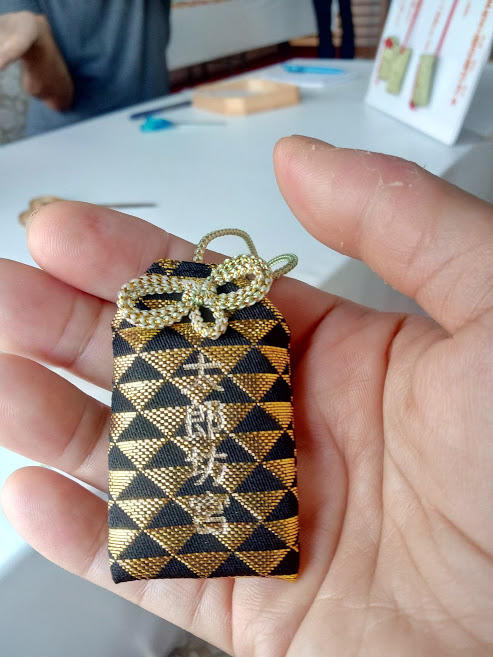
 Japanese only.....but please don't panic! As I said, priest or shrine maiden will teach you, but also can not speak any English. But they can show you how to do it. Easy!
Japanese only.....but please don't panic! As I said, priest or shrine maiden will teach you, but also can not speak any English. But they can show you how to do it. Easy!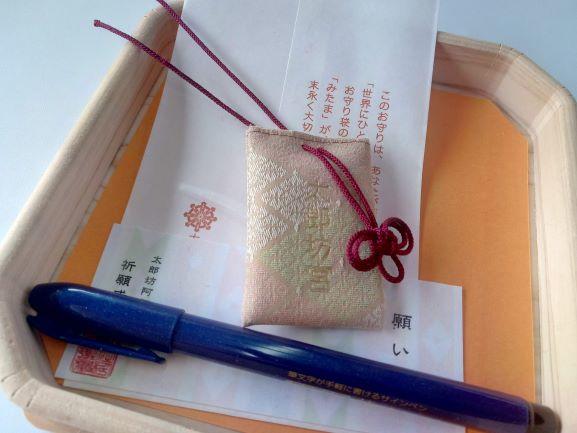 This is a set of Omamori lucky charm making. You can choose your small cloth bag and colour of ribbon by yourself.
This is a set of Omamori lucky charm making. You can choose your small cloth bag and colour of ribbon by yourself.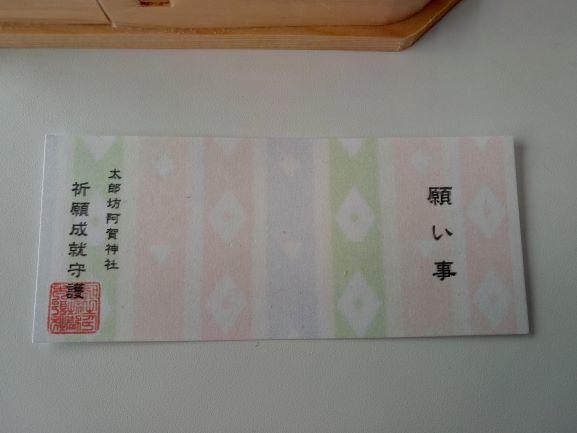
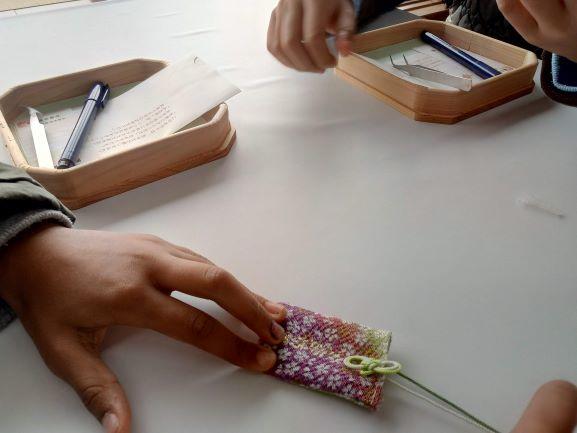 Tight the ribbon .... and completed!
Tight the ribbon .... and completed!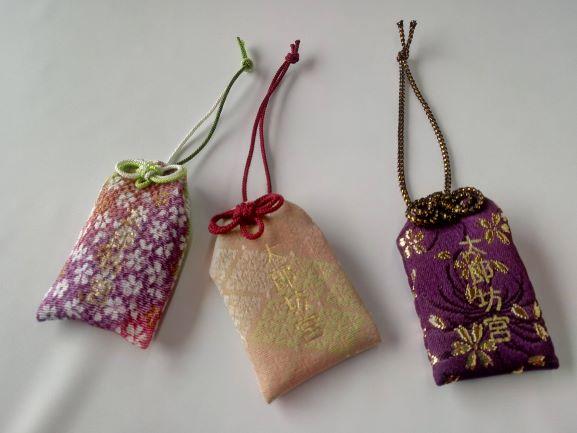 How do you think? My one is middle, and I love it so much.
How do you think? My one is middle, and I love it so much.









 Stone statue
Stone statue

 Around
Around

 It must be
It must be




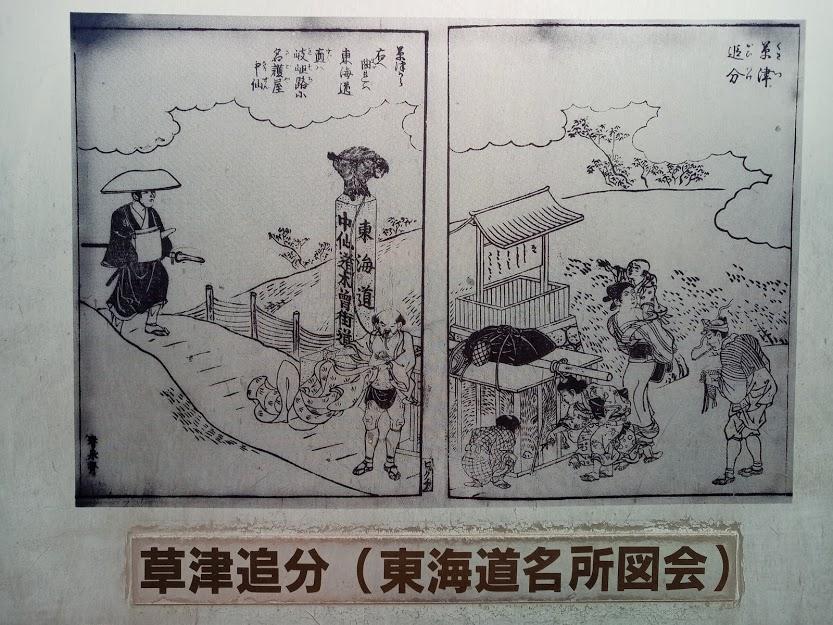
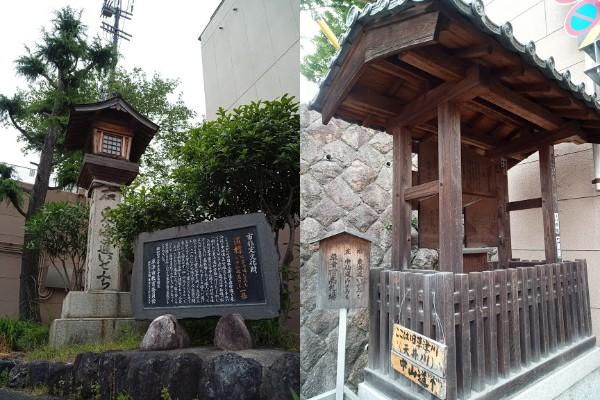

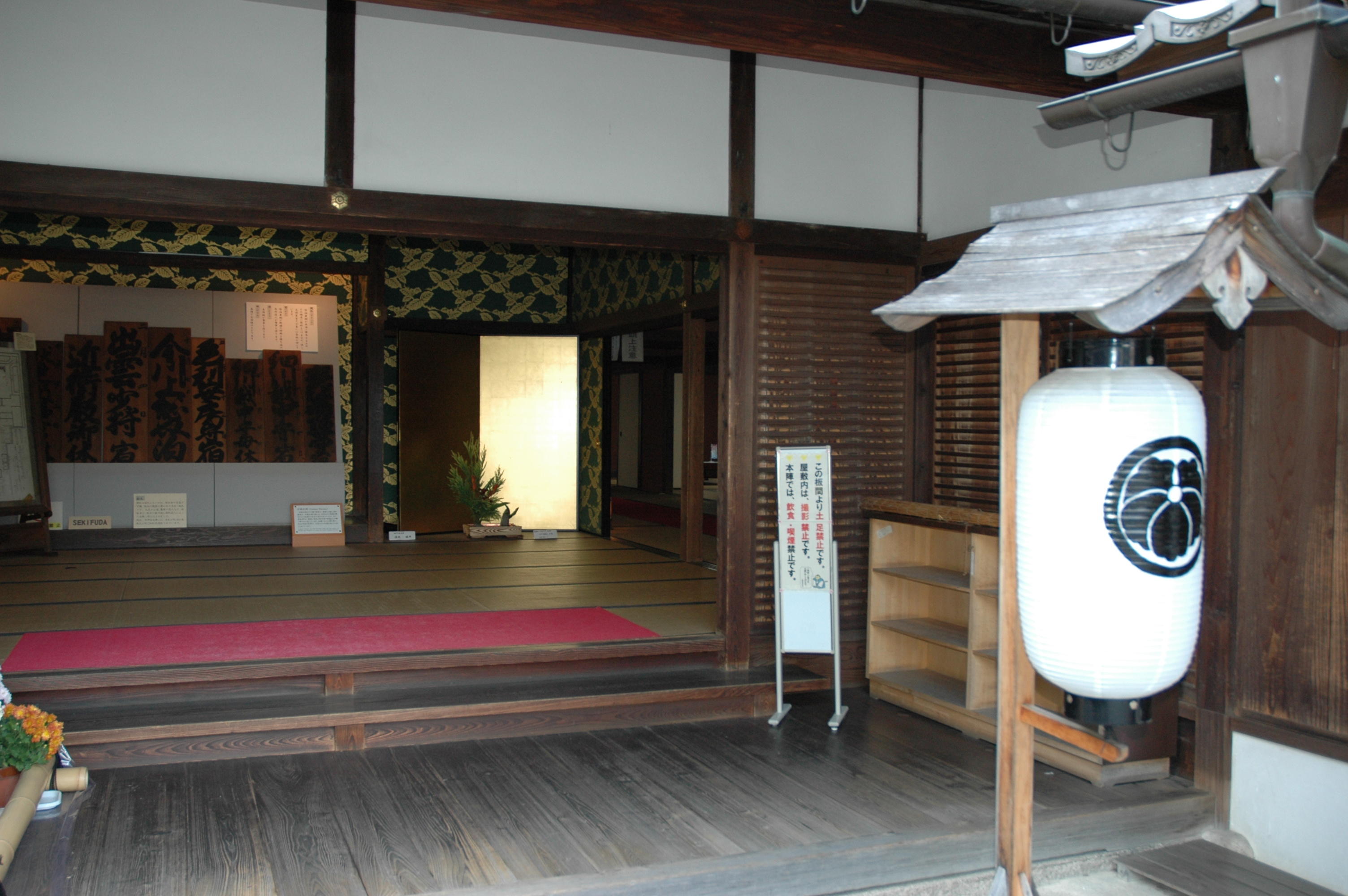
 Just second minutes walk from Furukawa Sake Brewery, you can see the sign board picture by Hiroshige Utagawa.
Just second minutes walk from Furukawa Sake Brewery, you can see the sign board picture by Hiroshige Utagawa. Thsi building was a Japanese sweets shop and now Hyosendo's office, Hyosendo is selling Hyotan (Gourd) and it used to water bottle when people walking Nakasendo / Tokaido.
Thsi building was a Japanese sweets shop and now Hyosendo's office, Hyosendo is selling Hyotan (Gourd) and it used to water bottle when people walking Nakasendo / Tokaido.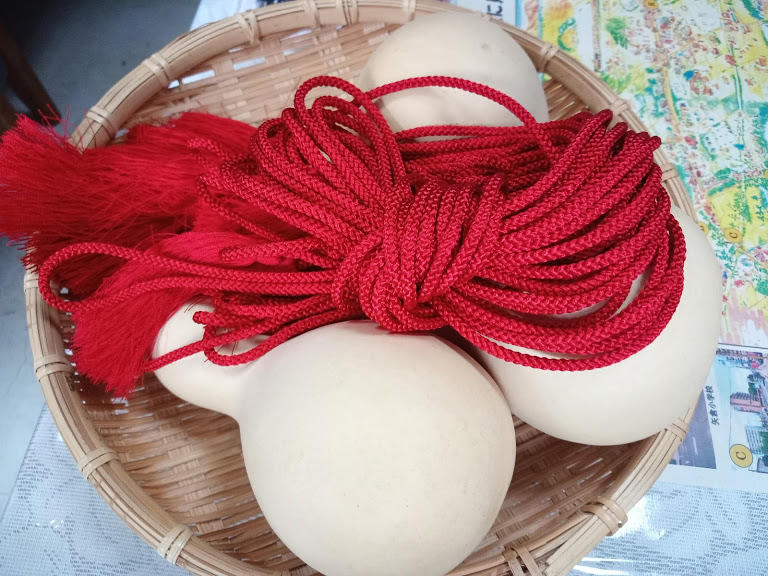 In Spring time, there is a festival called Kusatsu Shukuba Matsuri.
In Spring time, there is a festival called Kusatsu Shukuba Matsuri. 